NNI Supplement to the President’s 2019 Budget
This document is a supplement to the President’s 2019 Budget request, submitted to Congress on February 12th, 2018, and serves as the Annual Report for the National Nanotechnology Initiative (NNI) called for under the provisions of the 21st Century Nanotechnology Research and Development Act of 2003 (Public Law 108-153, 15 USC §7501). The report also addresses the requirement for Department of Defense reporting on its nanotechnology investments, per 10 USC §2358.
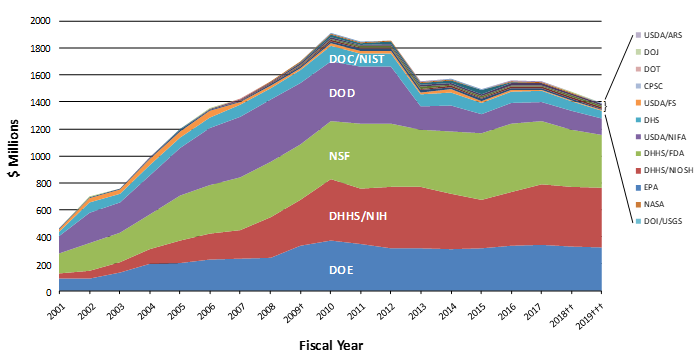
The President’s 2019 Budget provides nearly $1.4 billion for the NNI, a continued investment in basic research, early-stage applied research, and technology transfer efforts that will lead to the breakthroughs of the future. The NNI investments proposed for 2019 reflect the continued importance of investments that advance our fundamental understanding of and ability to control matter at the nanoscale, as well as the translation of that knowledge into technological breakthroughs that serve the American people.
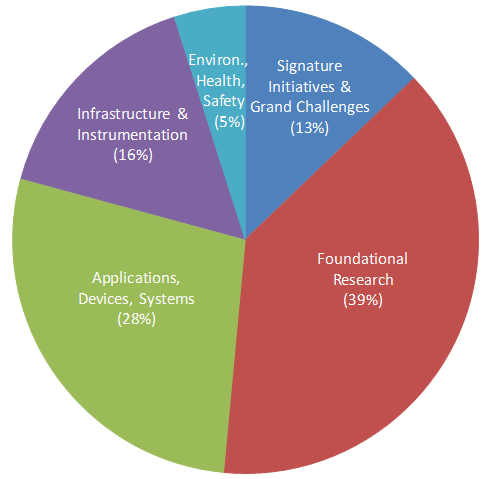
The President’s 2019 Budget supports nanoscale science, engineering, and technology R&D at 12 agencies. See the graph above for funding trends since the inception of the NNI; see the acronyms page for agency abbreviations. The NNI Supplement to the President’s 2019 Budget documents progress of the NNI participating agencies in addressing the goals and objectives of the NNI. As called for in the 21st Century Nanotechnology Research and Development Act, NNI investments are categorized by Program Component Area (PCA). The PCA breakdown for the 2019 Budget can be seen in the pie chart on the left. The formal definition of each PCA can be found on the NNI Vision, Goals, and PCAs page.
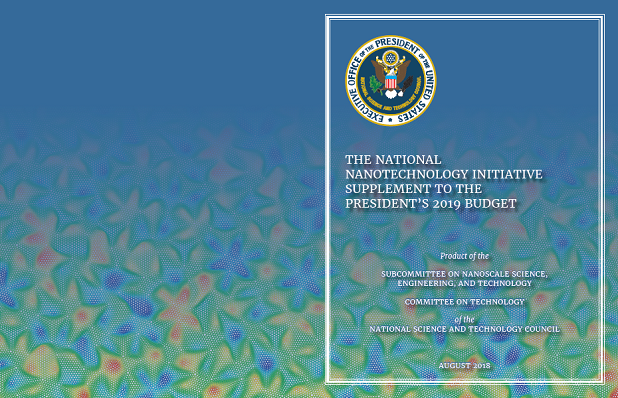
About the cover (above)
Each year’s NNI Supplement to the President’s Budget features cover images illustrating recent developments in nanotechnology stemming from NNI activities that have the potential to make major contributions to National priorities.
The image on this year’s cover (see full image below) shows an atomically thin two-dimensional membrane that has been decorated with a nanoscale periodic pattern of “disclinations,” i.e., topological defects in the ring structure of an otherwise hexagonal bond network. The disclinations formed by pentagonal rings define the apices of conical structures that have two stable states: upward “mountains” or downward “valleys.” Mechanical interactions between these conical structures cause them to assume a near-random pattern of up and down, thus leading to a membrane with an intriguing combination of regularity and disorder. This membrane can assume millions of distinct shapes, retaining a memory of each. The image is color-coded by the height of the membrane. This work was supported by the National Science Foundation (NSF) as part of the Two Dimensional Crystal Consortium, a Materials Innovation Platform (NSF Award #1539916), with additional contributions from the CoMET NSF Research Traineeship program (NSF Award #1449785). Image Credit: Benjamin Katz and Vincent Crespi, Pennsylvania State University.
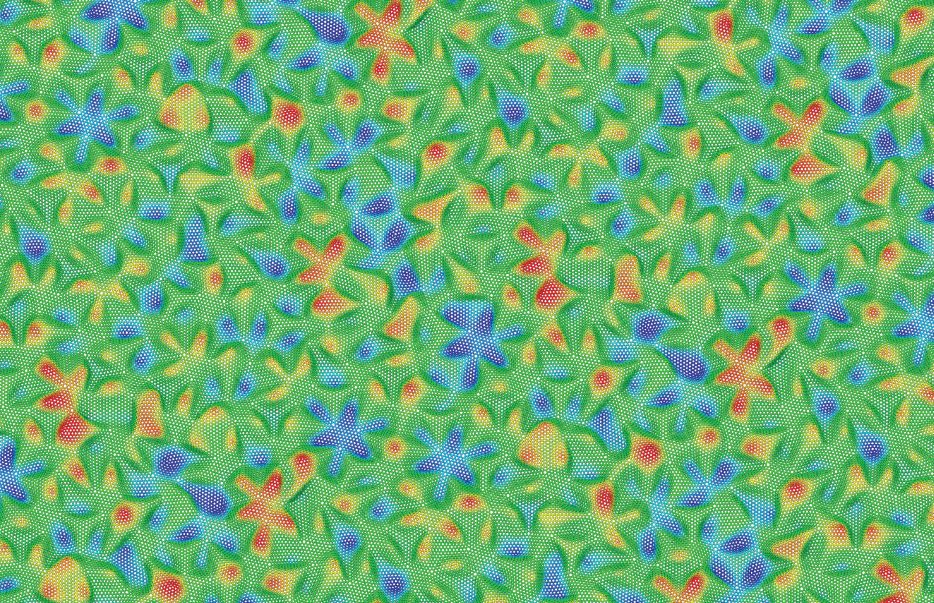
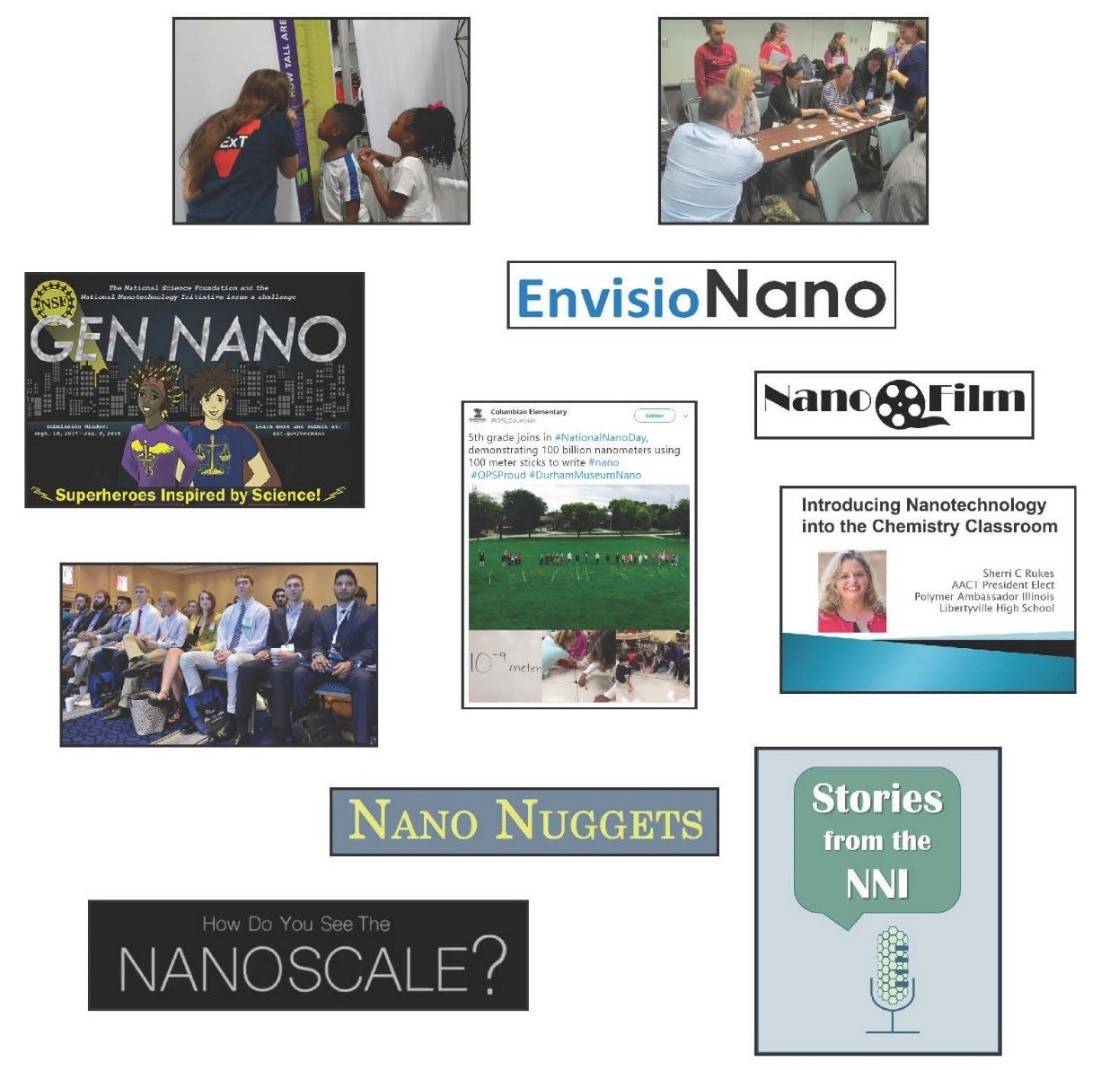
About the inside back cover (above)
- Conferences, including the USA Science and Engineering Festival, National Science Teachers Association, Student Leaders Conference, and professional society meetings.
- Contests for middle school, high school, undergraduate, and graduate students, and the general public (www.nsf.gov/news/special_reports/gennano/, www.nano.gov/EnvisioNano, www.nano.gov/VideoContest).
- National Nanotechnology Day, October 9th, in honor of 10-9 (www.nano.gov/NationalNanoDay).
- Networks for undergraduate students and K-12 teachers (www.nano.gov/StudentNetwork, www.nano.gov/TeacherNetwork).
- Podcast and videos featuring stories from the NNI community (www.nano.gov/NanoTV) and student-produced animations answering questions about nanotechnology (www.nano.gov/TargetCancerCells).
Additional agency highlights can be found here.




